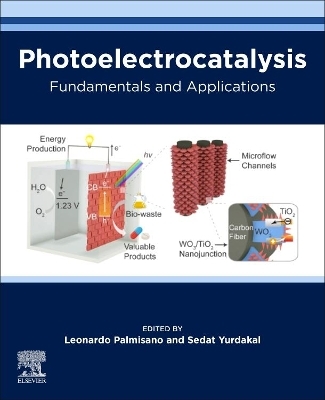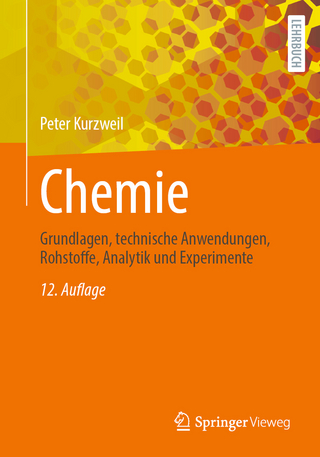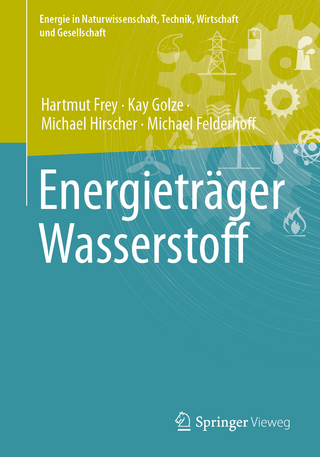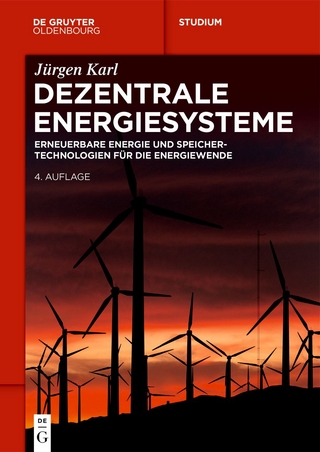
Photoelectrocatalysis
Elsevier Science Publishing Co Inc (Verlag)
978-0-12-823989-6 (ISBN)
working on photoelectrocatalysis-related subjects from pure chemistry to materials and environmental chemistry in
order to propose applications and new perspectives. The main advantage of a photoelectrocatalytic process is the mild
experimental conditions under which the reactions are carried out, which are often possible at atmospheric pressure and
room temperature using cheap and nontoxic solvents (e.g., water), oxidants (e.g., O2 from the air), catalytic materials (e.g.,
TiO2 on Ti layer), and the potential exploitation of solar light.
This book presents the fundamentals and the applications of photoelectrocatalysis, such as hydrogen production from
water splitting, the remediation of harmful compounds, and CO2 reduction. Photoelectrocatalytic reactors and light
sources, in addition to kinetic aspects, are presented along with an exploration of the relationship between photocatalysis
and electrocatalysis. In addition, photocorrosion issues and the application of selective photoelectrocatalytic organic
transformations, which is now a growing field of research, are also reported. Finally, the advantages/disadvantages and
future perspectives of photoelectrocatalysis are highlighted through the possibility of working at a pilot/industrial scale in
environmentally friendly conditions.
Leonardo Palmisano was born in Termini Imerese, Italy, in 1950. He obtained his B.Sc. degree in Chemistry cum laude in 1973 from the University of Palermo. He was a full professor of Chemistry in the Department of Engineering, University of Palermo, since 2000, and although he has now retired, he continues to carry out research. His scientific work mainly focuses on heterogeneous photocatalysis, such as preparation, characterization of many bulk and surface techniques, and testing of various types of bare and doped polycrystalline photocatalysts. He has collaborated with many scientists worldwide, producing joint papers in international journals (~350), many scientific and didactical books, and five patents. He is editorin- chief of the Journal of Photocatalysis and a member of the editorial boards of European Journal of Inorganic Chemistry, Current Organic Chemistry, International Journal of Photoenergy, Journal of Chemistry, and Journal of Membrane Science & Technology. Sedat Yurdakal was born in Birecik, Turkey, in 1977. He received his B.S.c. degree in Chemistry in 2000 from Anadolu University, Turkey. He performed his PhD degree thesis work at the University of Palermo, Italy, and Anadolu University from 2003 to 2010. He works as a full professor at Afyon Kocatepe University. He has published many papers in prestigious journals (>60), a patent, books (and book chapters) in different areas of heterogeneous photocatalysis, such as green photocatalytic and photoelectrocatalytic oxidations, remediation of harmful compounds, thin films, photocatalytic reactor applications, photoadsorption determination, and preparation of new materials containing TiO2. He is associate editor of the Journal of Photocatalysis and academic editor of the Journal of Chemistry. He has also been coeditor of special issues of Catalysis Today
1. Introduction
2. Fundamentals of photoelectrocatalysis
3. Structure, materials, and preparation of photoelectrodes
4. Photoelectrocatalytic reactors and light sources
5. Kinetic models in photoelectrocatalysis
6. Photoelectrocatalytic degradation of harmful compounds
7. Photoelectrocatalysis for hydrogen production devices
8. Photoelectrocatalytic CO2 reduction
9. Selective photoelectrocatalytic transformations of organic compounds
10. Deterioration of semiconducting materials: Photocorrosion
11. Future perspectives
| Erscheinungsdatum | 02.09.2022 |
|---|---|
| Sprache | englisch |
| Maße | 191 x 235 mm |
| Gewicht | 970 g |
| Themenwelt | Naturwissenschaften ► Chemie ► Technische Chemie |
| Technik ► Umwelttechnik / Biotechnologie | |
| ISBN-10 | 0-12-823989-1 / 0128239891 |
| ISBN-13 | 978-0-12-823989-6 / 9780128239896 |
| Zustand | Neuware |
| Informationen gemäß Produktsicherheitsverordnung (GPSR) | |
| Haben Sie eine Frage zum Produkt? |
aus dem Bereich


